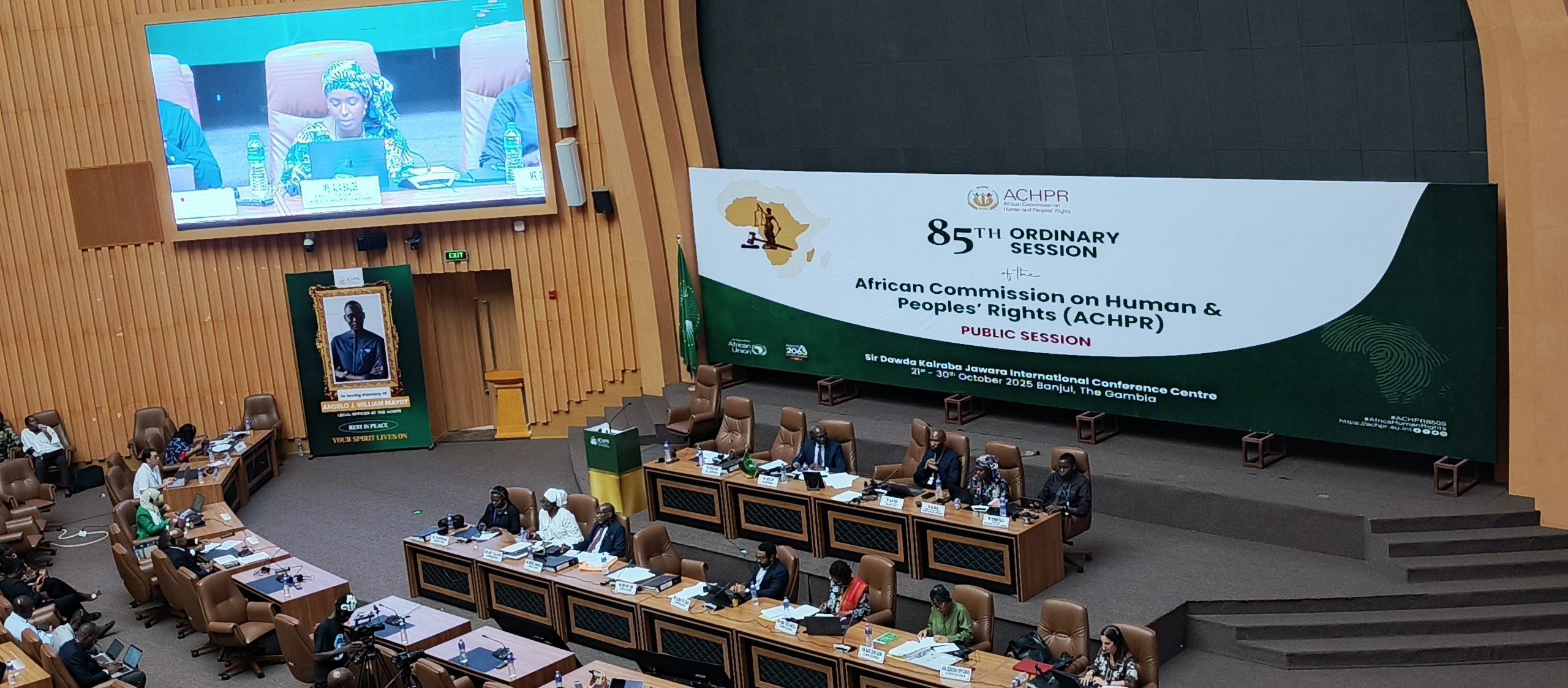Allies without Barriers: The Road to a More Inclusive Society – omnesmag.com

Report on Social and Labour Inclusion for Persons with Disabilities in Spain: A Sustainable Development Goals Perspective
Executive Summary
This report examines the state of social and labour inclusion for persons with disabilities in Spain, framing the challenges and opportunities within the context of the United Nations’ Sustainable Development Goals (SDGs). With over 4.38 million people living with a disability, Spain faces a significant gap in fulfilling its commitments to SDG 8 (Decent Work and Economic Growth) and SDG 10 (Reduced Inequalities). The analysis highlights persistent employment disparities and social barriers, while presenting the work of organisations like Aliados por la Integración as a replicable model for achieving these goals through multi-stakeholder partnerships, as outlined in SDG 17 (Partnerships for the Goals).
Analysis of Employment Disparities and Social Barriers
Employment Statistics: A Direct Challenge to SDG 8
The current employment landscape for persons with disabilities in Spain presents a significant challenge to achieving Target 8.5 of the SDGs, which calls for full and productive employment and decent work for all, including persons with disabilities. The data reveals a profound structural inequality:
- The employment rate for persons with disabilities is only 27.8%.
- This stands in stark contrast to the 68.1% employment rate for the non-disabled population, representing a gap of over 40 percentage points.
- The situation is more critical for individuals with intellectual disabilities, whose employment rate is just 23.8%.
These figures represent a failure to integrate a significant portion of the workforce, hindering inclusive economic growth and wasting human potential, which are core tenets of SDG 8.
Social Perceptions: Obstacles to SDG 10
Achieving SDG 10 (Reduced Inequalities), particularly Target 10.2 concerning the social and economic inclusion of all, is impeded by prevailing societal attitudes and a lack of awareness. These social barriers manifest as:
- Prejudice and Discomfort: 43% of Spaniards report feeling discomfort when interacting with persons with disabilities.
- Discriminatory Treatment: 63% of respondents admit to treating individuals with intellectual disabilities in an infantilizing manner, a subtle but pervasive form of discrimination.
- Lack of Integration: 75% of the population states they have never had a co-worker with a disability, reinforcing stereotypes and perpetuating a cycle of exclusion.
Case Study: Aliados por la Integración as a Model for SDG 17
Mission and Multi-Stakeholder Partnership Framework
For over two decades, Aliados por la Integración has served as a key agent in advancing Spain’s progress towards the SDGs. The organisation’s operational model is a prime example of SDG 17 (Partnerships for the Goals), creating a collaborative ecosystem for inclusion by working with social entities, private companies, and public administrations. Its mission is founded on the principle that employment is the most effective pathway to promoting equal opportunities and building a just society, directly aligning with the objectives of SDG 8 and SDG 10.
Key Initiatives and Contributions to the SDGs
The organisation’s impact is delivered through a series of targeted initiatives that create tangible opportunities and address specific SDG targets.
- Special Employment Centre: This core component directly facilitates the labour market transition for persons with disabilities, creating protected yet productive work environments. This initiative is a direct mechanism for advancing SDG 8 by generating decent work opportunities.
- Integrated Service Provision: The entity has become a national reference in providing services to Religious Institutions, operating in 116 centres. By offering social and healthcare services (contributing to SDG 3: Good Health and Well-being) alongside general and administrative services, it creates employment for vulnerable individuals while optimising resources for partner institutions.
- Promoting Diversity as an Economic Asset: By demonstrating the tangible benefits of inclusive workplaces—such as improved team communication, creativity, and productivity—the organisation makes a business case for diversity. This reinforces the principle that social inclusion is not only a matter of justice but also a driver of sustainable economic performance under SDG 8.
Future Outlook: Demographic Trends and Strategic Imperatives
Demographic Shifts and Implications for SDG 3 and SDG 11
Spain’s demographic trajectory necessitates an urgent and strategic focus on disability inclusion. The accelerated ageing of the population directly impacts several SDGs.
- By 2050, over 30% of the population will be over 65, an age group where disability prevalence rises sharply.
- This trend places increased pressure on achieving SDG 3 (Good Health and Well-being) for all ages.
- It also underscores the critical importance of SDG 11 (Sustainable Cities and Communities), particularly Target 11.7, which calls for universal access to safe, inclusive, and accessible public spaces.
Recommendations for a Fully Inclusive Society Aligned with the 2030 Agenda
To accelerate progress towards a fully inclusive society, a coordinated national effort is required. The path forward must be guided by the principles of the Sustainable Development Goals.
- Establish a Social Pact: A comprehensive social pact involving public administrations, the private sector, and civil society is essential, embodying the spirit of SDG 17 to create effective partnerships.
- Adopt a Rights-Based Model: A fundamental shift is needed from a welfare or compassion-based perception of disability to one grounded in rights, opportunities, and the recognition of individual potential, as envisioned in SDG 10.
- Embed Universal Design Principles: Universal accessibility and design-for-all must become foundational principles for all urban, technological, and service development, ensuring the realisation of SDG 11.
- Champion Diversity as a Value: Society must move to fully recognise diversity as an invaluable asset that enriches communities and strengthens the economy, contributing to a more resilient and prosperous future for all.
1. Which SDGs are addressed or connected to the issues highlighted in the article?
-
SDG 8: Decent Work and Economic Growth
- The article extensively discusses the employment challenges faced by people with disabilities in Spain. It highlights the low employment rate for this group and presents the work of organizations like “Aliados por la Integración” which focuses on generating job opportunities as a primary means of inclusion.
-
SDG 10: Reduced Inequalities
- The core theme of the article is the social and economic inclusion of people with disabilities to reduce the inequalities they face. It points out the “gulf” in employment rates between people with and without disabilities and discusses the need to move from a welfare model to one based on rights and opportunities for all.
-
SDG 3: Good Health and Well-being
- The article connects disability with the aging population, noting that by 2050, over 30% of the Spanish population will be over 65, leading to an increase in age-related functional limitations. It also mentions the provision of “social and health care services for the elderly (geriatric nurses, nurses, physiotherapists, occupational therapists, etc.)” by Aliados por la Integración, directly linking to health and well-being services.
-
SDG 17: Partnerships for the Goals
- The work of “Aliados por la Integración” is presented as a model of collaboration. The article states that the entity “develops its work through collaboration with different social entities, companies and administrations, generating job opportunities.” This highlights the importance of multi-stakeholder partnerships to achieve inclusion goals.
2. What specific targets under those SDGs can be identified based on the article’s content?
-
Target 8.5: Achieve full and productive employment and decent work for all, including persons with disabilities.
- This target is central to the article. The text focuses on the mission of “Aliados por la Integración” to promote “inclusion through employment” and directly addresses the disparity in employment rates, aiming to create job opportunities for people with disabilities.
-
Target 10.2: Empower and promote the social, economic and political inclusion of all, irrespective of age, sex, disability, etc.
- The article calls for a “profound transformation” to move towards a society where “each person can fully develop their potential and actively contribute.” It explicitly discusses the need for social and labor inclusion for people with disabilities, which is the essence of this target.
-
Target 3.8: Achieve universal health coverage, including access to quality essential health-care services.
- The article mentions that “Aliados por la Integración” provides “social and health care services for the elderly (geriatric nurses, nurses, physiotherapists, occupational therapists, etc.)” in 116 centers. This directly relates to providing access to essential health-care services for a vulnerable segment of the population.
-
Target 17.17: Encourage and promote effective public, public-private and civil society partnerships.
- The operational model of “Aliados por la Integración” exemplifies this target. The article describes its success as being based on “collaboration with different social entities, companies and administrations” and creating “strategic alliances” to multiply its impact, demonstrating a civil society partnership in action.
3. Are there any indicators mentioned or implied in the article that can be used to measure progress towards the identified targets?
-
Indicator for Target 8.5: Unemployment/Employment Rate of Persons with Disabilities.
- The article provides precise data that can be used as an indicator: “the employment rate of people with disabilities stands at just 27.8 %, a gulf compared to 68.1 % for the non-disabled population.” It also specifies the rate for people with intellectual disabilities at “23.8 %.”
-
Indicator for Target 10.2: Proportion of people reporting having personally felt discriminated against or harassed on the basis of disability.
- While not a direct measure of discrimination, the article provides proxy indicators of societal attitudes that create barriers to inclusion. It states that “43 % of Spaniards admit to feeling some discomfort when interacting with people with disabilities” and “63 % of respondents acknowledge ‘not being able to avoid’ treating people with intellectual disabilities as if they were children.” Furthermore, “75 % state that they have never had a co-worker with a disability,” indicating a lack of integration.
-
Indicator for Target 3.8: Coverage of essential health services.
- The article implies an indicator of service coverage by stating that the organization has a “presence in 116 centers that serve more than 2,000 users,” providing social and health care services. This data reflects the reach of health services to a specific population.
-
Indicator for Target 17.17: Number of partnerships and collaborations.
- The article implies this indicator by mentioning that “Aliados por la Integración” collaborates with “57 religious institutions between bishoprics and congregations” as well as other “social entities, companies and administrations.” The number of active partnerships serves as a measure of progress for this target.
4. Table of SDGs, Targets, and Indicators
| SDGs | Targets | Indicators Identified in the Article |
|---|---|---|
| SDG 8: Decent Work and Economic Growth | 8.5: Achieve full and productive employment and decent work for all, including persons with disabilities. |
|
| SDG 10: Reduced Inequalities | 10.2: Empower and promote the social, economic and political inclusion of all, irrespective of disability. |
|
| SDG 3: Good Health and Well-being | 3.8: Achieve universal health coverage, including access to quality essential health-care services. |
|
| SDG 17: Partnerships for the Goals | 17.17: Encourage and promote effective public, public-private and civil society partnerships. |
|
Source: omnesmag.com

What is Your Reaction?
 Like
0
Like
0
 Dislike
0
Dislike
0
 Love
0
Love
0
 Funny
0
Funny
0
 Angry
0
Angry
0
 Sad
0
Sad
0
 Wow
0
Wow
0













































































